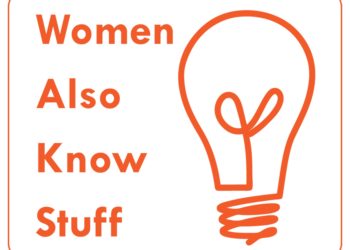Editor’s Note: Today’s post is by Elizabeth Ketterman, MLS, Director of the William E. Laupus Health Sciences Library at East Carolina University, and Sean Pidgeon, Publishing Director for Science and Medicine and Oxford University Press.
The second MLA InSight Summit, held in Chicago in September 2018, brought librarians and publishers together with healthcare professionals for discussions on the theme of “Meeting the Evolving Information Needs of Library Stakeholders,” continuing where the first InSight Summit left off. With the proceedings expertly and at times provocatively facilitated by the organizers, Dan Doody and Rich Lampert of Doody Consulting, the participants found much common ground, but also a lack of clear solutions to vexing problems.
Financial support once again came from industry sponsors: American Psychiatric Association Publishing, American Psychological Association, Annual Reviews, BMJ Publishing, Elsevier, F1000, The JAMA Network, McGraw-Hill Education, NEJM Group, Rockefeller University Press, Oxford University Press, ProQuest, Springer Nature, and Wolters Kluwer.
Our keynote speakers kicked off day one by introducing first a quantitative and then a qualitative perspective on readers’ approaches to content discovery. On day two, a panel composed of healthcare professionals discussed their personal information-seeking behaviors. In between, a series of small-group discussions with balanced representation from publishers and librarians drew much inspiration from these presentations. Throughout the event, there was a strong camaraderie and a sense of common purpose, but also a pervasive feeling that “talk is cheap, but it takes money to buy whisky.” In other words, how can our communities work together in collaborative efforts that actually make a difference? We will return to this theme later in the post.

Discovery Methods, Quantified
Tracy Gardner of Renew Publishing Consultants gave us a solid basis for informed discussion by sharing data on the evolving content discovery habits of North American health professionals, comparing the results of a 2018 survey with data collected as far back as 2005. Some noteworthy trends emerged from Gardner’s analysis. The traditional abstracting and indexing services (A&Is) and major search engines continue to dominate as the starting point for information discovery. Library discovery services, though, have peaked, holding a strong position only in the humanities and social sciences. Social media is growing in overall importance, but its uptake as a discovery tool varies greatly by discipline. Google and YouTube are the primary sources for video content, though medical professionals also access videos on journal platforms. And across all sectors, people are primarily accessing journal content on laptops and desktop computers and far less often on phones and tablets. The full report is available for further reading.
Disorienting Dilemmas
Jeff Williams, Director of the NYU Health Sciences Library, shared some thought-provoking ideas on how to convert grudging patrons into power users by reshaping their perceptions of the role of the librarian. Referencing the work of American sociologist Jack Mezirow, who theorized that perspective transformations often begin with a “disorienting dilemma” that challenges the individual’s current worldview, Williams suggested that the unfamiliar experience of working closely and directly with a librarian on a team or project represents just such a dilemma. Those who have had this transformative experience often go on to become library evangelists.
Williams further asserted that librarians “all have the power of this disorienting dilemma” to continue connecting, engaging, and embedding with their users. This is rather intriguing; hold that thought.
A Plethora of User Journeys
The impressive group of clinical professionals who were featured on our day-two panel kept us grounded in the reality that users will do what works best for them in their complex, time-starved working environments, and those choices are often quite divergent from “traditional” approaches to information seeking, such as A&I services. Some standout moments:
- For some clinical research communities, Twitter is a go-to resource (did we hear an audible gasp from the audience?).
- The phone camera has become an invaluable tool for capturing information (slides, clinic handouts, recommendation tables) for later reference.
- Digital resources have largely replaced books as point-of-care references, but textbooks in specialty areas are still vital.
- Mobile apps are highly valued in clinical settings.
A Framework for Action
So, back to those disorienting dilemmas. We were so enamored of this conceptual model that we have adopted it here as a framework for describing some problem-solving initiatives in which the library, publisher, and end-user communities can find common cause. These were the among the most prevalent concerns and challenges voiced during the small-group discussions.
Disorienting Dilemma #1: Patrons do not understand the value of the services provided by the library
Library users have little idea of the cost of subscriptions or the intellectual capital required to provide them with efficient access to timely and authoritative information.
Call to Action #1: How can the library community work with publishing partners to make these investments more visible and meaningful to our end-users?
Disorienting Dilemma #2: We have a poor understanding of how our users find content and interact with one another online
There is a major discrepancy between how librarians search and how healthcare professionals search, as noted in Gardner’s report and reinforced by the conversations among summit participants. Beyond the confines of the traditional library and publisher resources, users have access to a diverse and expanding array of tools to critique scholarly output and promote novel ideas.
Call to Action #2: It is critically important for librarians and publishers to understand these evolving trends in information access. Is there more we can do to share and appropriately contextualize the available data?
Disorienting Dilemma #3: We seem to be helpless targets for pirates
The activities of pirate sites like Sci-Hub are insidious and proliferating. Pirated content is highly discoverable, and there are fewer steps needed to get to it than to subscribed content. Busy end-users, meanwhile, respond more readily to the lifting of access barriers than to ethical appeals.
Call to Action #3: How can librarians and publishers work with search providers such as Google Scholar to make subscribed content as discoverable as possible? How can we simplify the authentication process to encourage users to access the legal version?
Disorienting Dilemma #4: Predatory publishers are taking advantage of a shifting open access landscape
To the untrained eye, predatory journals can sometimes be hard to distinguish from legitimate scholarly outlets. This problem is exacerbated by significant ongoing changes in open access mandates and models.
Call to Action #4: How can we work together to elevate authors’ and readers’ information literacy regarding predatory publishers and their tactics?
Disorienting Dilemma #5: It is challenging to conduct rigorous and reproducible research in the biomedical sciences
The “reproducibility crisis” in biomedicine and other research areas has been well documented in the pages of The Scholarly Kitchen and has become an increasing focus for research funders such as NIH. Lack of rigor can adversely affect an experimental program at any point in the research workflow, from planning and execution to analysis and writing for publication, and librarians and publishers have many touch-points around this workflow cycle.
Call to Action #5: How can we work together to bring our combined resources to bear on this fundamental challenge for the research enterprise?
We hope these calls to action might prove to be useful discussion points for the next MLA InSight Summit.
Adolescent Defiance
In their post describing the first MLA InSight Summit, Steven Heffner and Shalu Gillum suggested that this forum must still find its robust growth path from infancy to adolescence, writing that “[t]he formula for success exists; we hope the commitment from all sides can persist as well.” In the view of the present authors, we have reached our metaphorical fifteenth birthday: the world sometimes feels like it’s against us, and we’re still a little too young to buy whisky, but we’re determined to make our mark.
Discussion
8 Thoughts on "Guest Post: MLA InSight — How to Buy Whisky"
Thank you for this great read! Your observations confirm much of what I have seen and heard as a librarian working in the scholarly communications realm for a few years, and I have some brief answers to a few of the questions you pose.
“Call to Action #1: How can the library community work with publishing partners to make these investments more visible and meaningful to our end-users?”
I mention my library’s overall spend on journals, databases, and other continuing resources almost anytime I get the chance in conversations with administrators, faculty, and students, and particularly when I am leading any sort of library instruction, including sessions focused on information literacy (IL) as well as those on scholarly communications issues. After dropping the budget bombshell, I invariably hear gasps of astonishment. Also, at my former place of employment, we had a banner image on our homepage at different times of year that also published these numbers. It is vitally important that our users understand how much these resources cost, and there is no reason to keep these overall figures secret (I know we often have NDAs as part of our contracts with vendors, and I’m not advocating for violating those agreements).
“Call to Action #2: It is critically important for librarians and publishers to understand these evolving trends in information access. Is there more we can do to share and appropriately contextualize the available data?”
I don’t have a vast array of broadly generalizable data. However, I did recently come across an interesting conversation on Reddit, specifically r/AskAcademia (https://www.reddit.com/r/AskAcademia/). A user asked this question, and got 106 responses: “Does anyone really use something else than Google Scholar (+Forward/Backward Search) and Sci-Hub?” (https://www.reddit.com/r/AskAcademia/comments/ad5if9/does_anyone_really_use_something_else_than_google/) I found it interesting to eavesdrop on this conversation that researchers had when they thought library and publishing folks weren’t listening.
“Call to Action #4: How can we work together to elevate authors’ and readers’ information literacy regarding predatory publishers and their tactics?”
We must continue to talk with faculty and students about these issues and bring them up at every opportunity. IL instruction should include at least a brief mention of them, and librarians should include info about predatory journals in their online research guides. An open access publishing fund is often an effective way of starting this conversation as well since faculty members may apply for the fund to unknowingly pay a predatory publisher, and the fund administrator can take that opportunity to educate the faculty members about these problematic journals and point them toward truly professional OA publishers and journals.
Many thanks for this, Jody. The Reddit thread is especially interesting (and nice to see some people there praising the legitimate sources, such as PubMed).
Major publishers like Wiley, Springer and Elsevier have basically solved authentication. If I’m on my institution’s network, I can access subscribed material. I don’t need to login, I just go to full text and I get the papers. As a result I cite these publisher’s journals and submit my articles to them.
For APA, the effort required has meant that I don’t bother citing their journals. It simply takes too much effort to get to the full text (the ‘full-text’ button never takes you to the full-text and the DOI redirects to the abstract). Since no one cites APA journals, their impact factors are now quite low and no one sends important work there, exacerbating their irrelevance.
You might not be happy to hear that those publishers you praise are not exactly why you have that kind of access. And, in fact, if those publishers have it their way, the RA21 initiative will eventually eliminate this authentication approach and force every user to login every time they want to access an article.
I thought the whole point of RA21 was that you only have to log-in once and then you’re granted access across the board to all journals that you have rights to see. I’ve never seen anything about having to log-in every time for every article. The whole point (or at least one of the main points) of RA21 is to simplify the user journey to the article.
There is a time limit on that “login once” thing David. So, let’s meet in the middle. IP authentication is eliminated. On campus users will be logging in often – way more than they do now (especially given that there is not a cloud option to start with so no cross-publisher login transfer) … even if not for every article.
The difference probably depends on how the user is currently set up. I’ve been on campuses where, once you were on the network, you had direct access to journals, no log-in needed. Other campuses where I’ve had to go through complicated log-in processes for each different article/journal. So for some there will be immediate and obvious benefits.
But yes, I do suspect there will be growing pains as more publishers/universities come on line, but the whole point of the thing is to simplify the user journey. I’m also not clear on the “time limit” on a log-in that’s going to be implemented. Will it be measured in seconds? Weeks? Months?
Right, David, the “once you were on the network, you had direct access to journals” – IP authentication – is what RA21 will eliminate.
Also – per the current recommendation – hours (a work day).


